A booming oyster population has Md. watermen hopeful, but right now they’re hurting
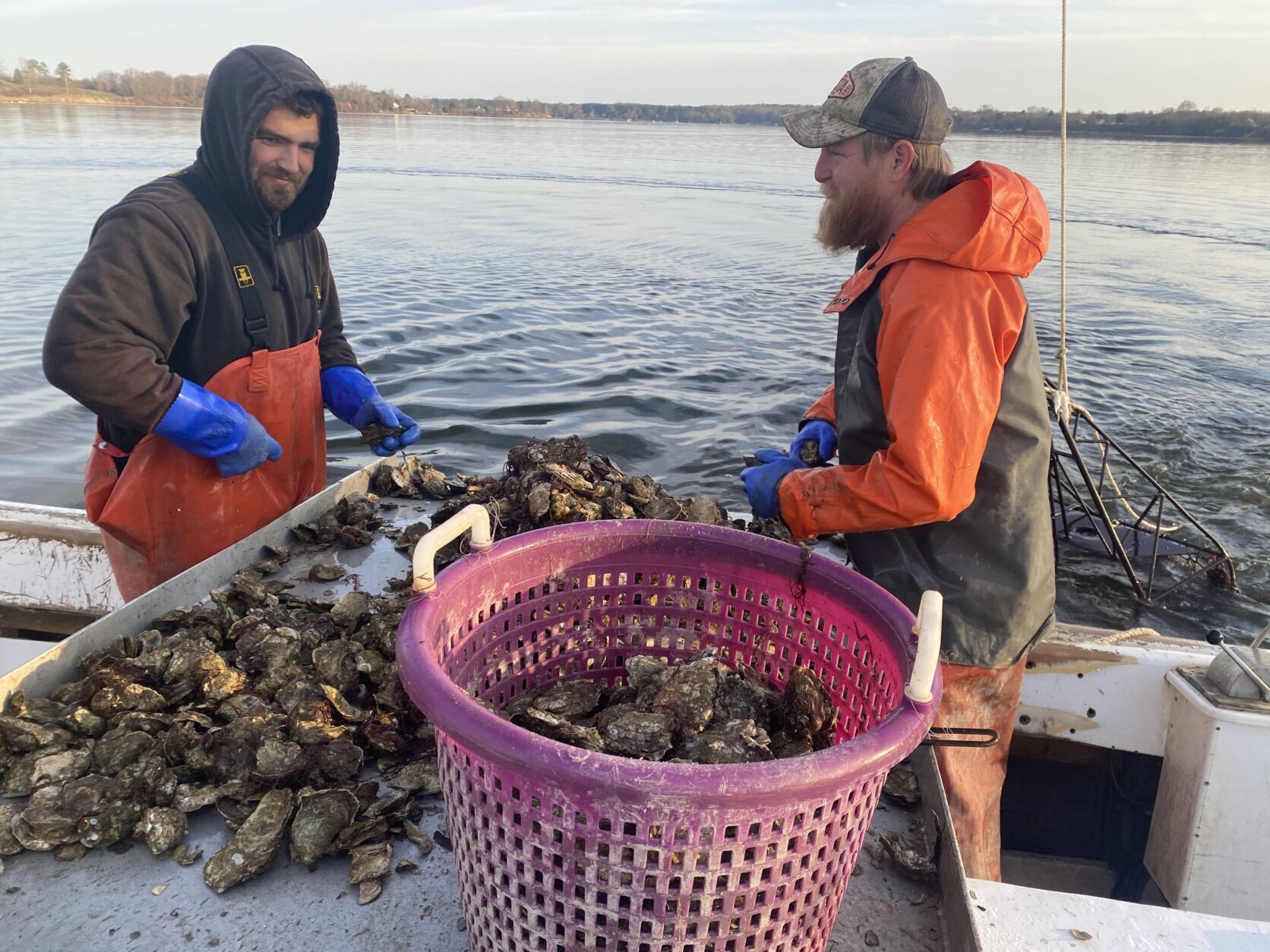 1/5
1/5
Two Maryland watermen work to harvest oysters.
(WTOP/John Domen)
As the commercial oyster season starts to wind down, it’s clear that things have vastly improved from just 20 years ago, when disease and death meant watermen harvested just 26,000 bushels of oysters. Last year, that number was more than 720,000 bushels, according to Maryland’s Department of Natural Resources. For state leaders, it’s a success story, and an indication that conservation efforts and restrictions are working. But they also admit there’s some luck involved.
Conservation, restoration and ‘plain luck’
“We’ve done a lot of work on restoration of the big five,” said Lynn Fegley, the director of fishing and boating services with Maryland’s Department of Natural Resources. She was referring to the five oyster sanctuaries that are now off limits to harvesting: Harris Creek and the Little Choptank, Tred Avon River, St. Mary’s River and Manokin River. All but the St. Mary’s are located on the Eastern Shore, and together they make up almost 25% of the state’s prime oyster beds.
“Between restoration, managing the fishery and just plain luck from Mother Nature, I think that’s what’s gotten us into this place,” she said.
In this case, luck is relative, since she’s referring to recent summertime droughts that have hampered farming in the mid-Atlantic. But with less rain water draining into the Chesapeake Bay and its tributaries, those waters saw an increase in salinity levels.
“Higher salinity is helpful for oysters to settle,” Fegley said. “When we had this dry period where the water was saltier, that’s what really kicks oysters into gear, in terms of producing a good spat set.”
It also means a better tasting oyster right now, at least in Brown’s opinion.
“It’s got good meat into them here and it’s our future. We needed this to bring it back,” Brown said.
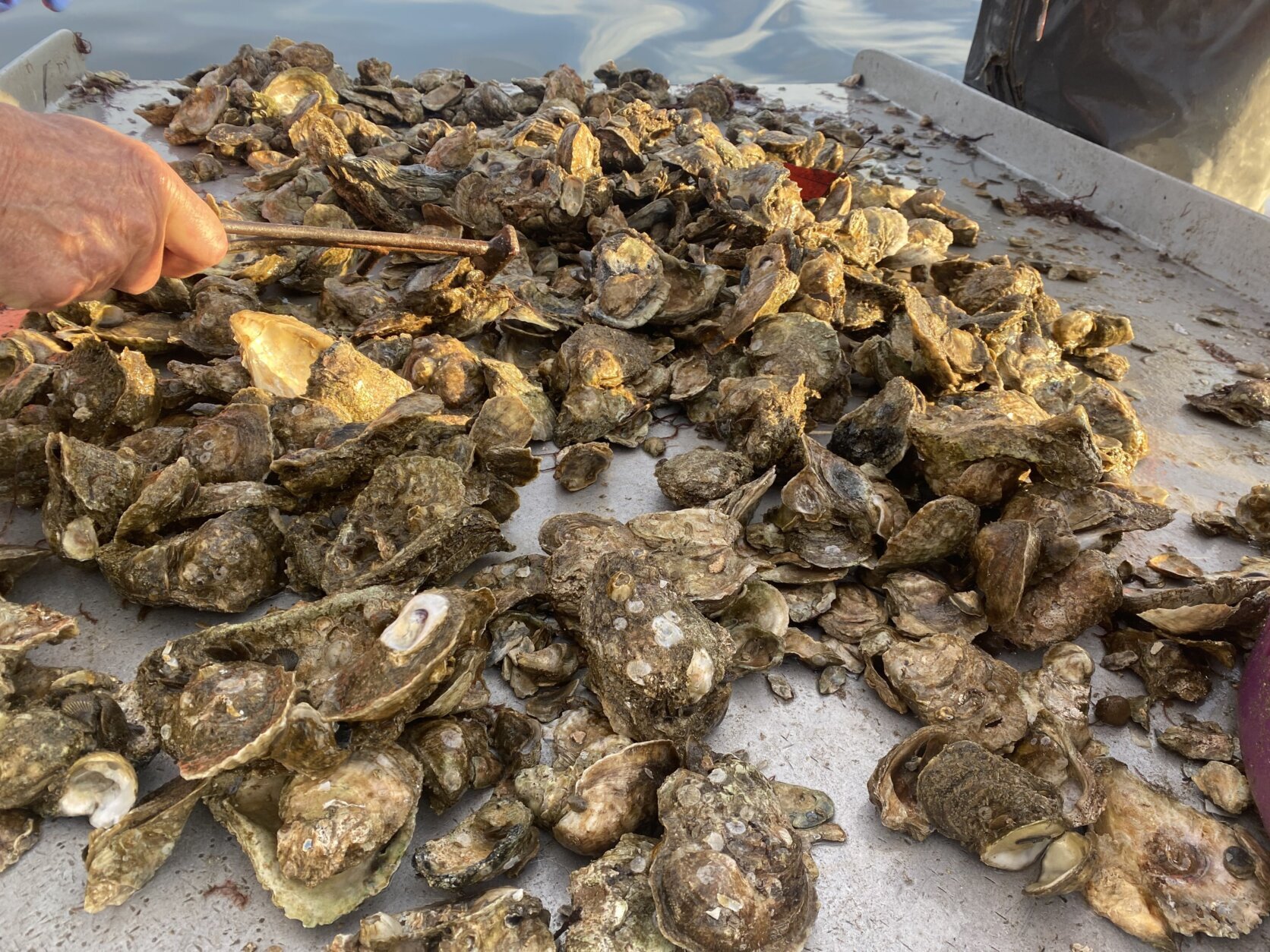 2/5
2/5
A pile of oysters spread out flat as Maryland watermen work.
(WTOP/John Domen)
Brown, who is also the president of the Maryland Watermen’s Association, said the repeated rainfall that’s drenched the mid-Atlantic the past couple of months will reduce that salinity at a time when oysters need that to boost their immune system and avoid disease.
But just when supplies are rising, demand appears to be waning, meaning Maryland’s watermen are making less money than they used to.
Bushels sell for less, impacting watermen’s bottom line
“Well, it’s very simple. I think seafood is a luxury,” Brown said.
Even though many economic indicators are and have been positive for a while, it doesn’t mean people haven’t been wary about spending on certain things. And Brown said at the grocery store the amount of chicken or beef you can get for $35 goes a lot further than the amount of oysters you can get for $35. That’s sent the price of a bushel of oysters from $45-50 down to around $35.
“When you’re down that much on your sales, that’s your gross, that’s where you profit is,” Brown said. “Your profit is not in the first bushel you catch, it’s in the last bushel you catch because you know you got to keep the boots up, the equipment up.”
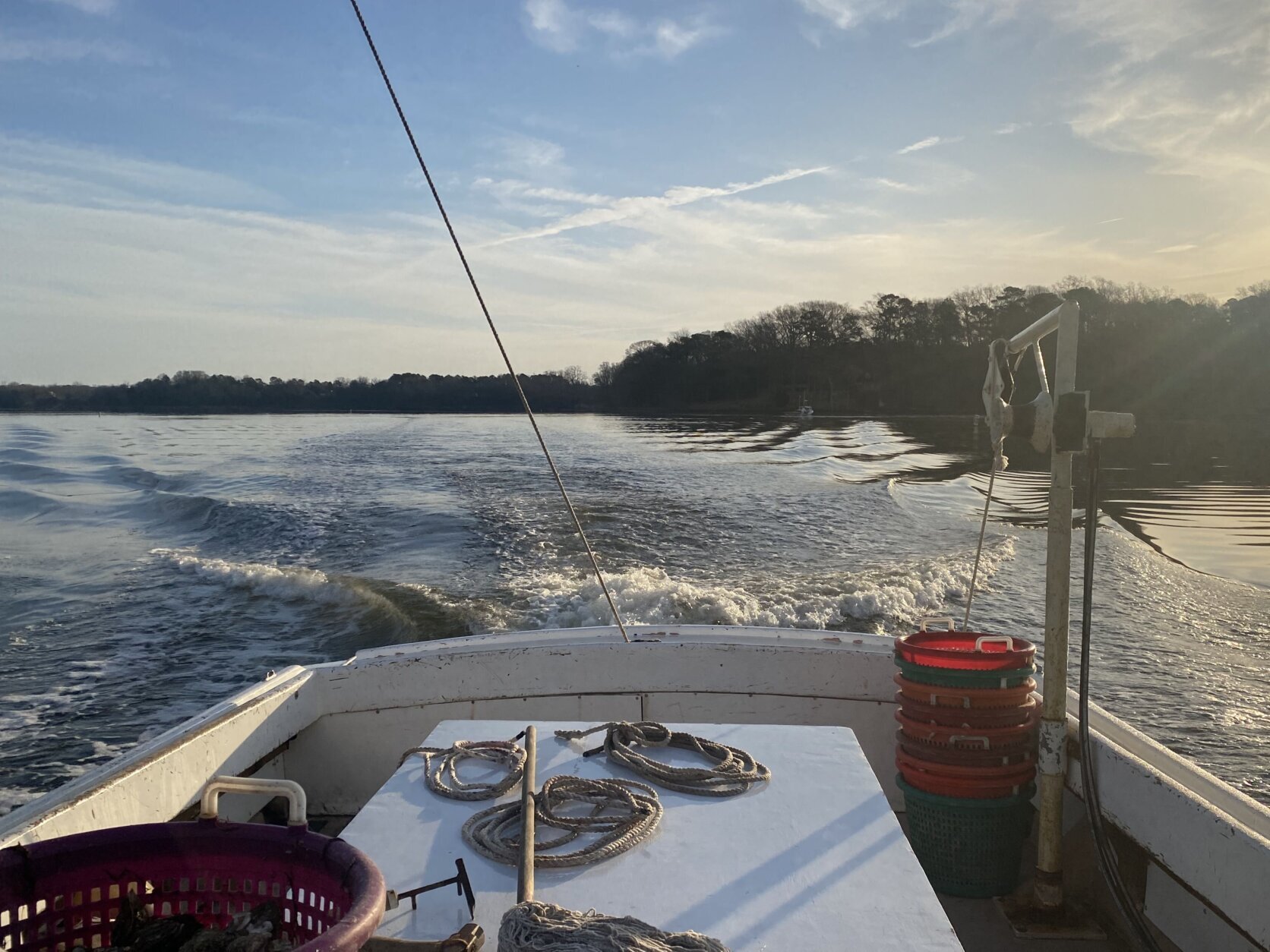 3/5
3/5
The back of a boat driving along Maryland’s waterways.
(WTOP/John Domen)
That’s all happening even though watermen have had to cut back on the amount of time they can be out dredging for oysters.
When watermen could sell a bushel for $50 — 20 bushels a day could bring in $1,000. But now, selling each bushel for $35, the same amount of oysters brings in $700.
That $300 difference every day starts to add up, Brown said.
But Brown said the seafood industry usually lets one population rebound while another product is in high demand.
“When oysters fell off the past few years, crabbing picked up, so that’s the reason why we have to be able to diversify,” he said. “We can go crab more, and then when oysters pick up, that takes the pressure off the crab. So that can rebound.”
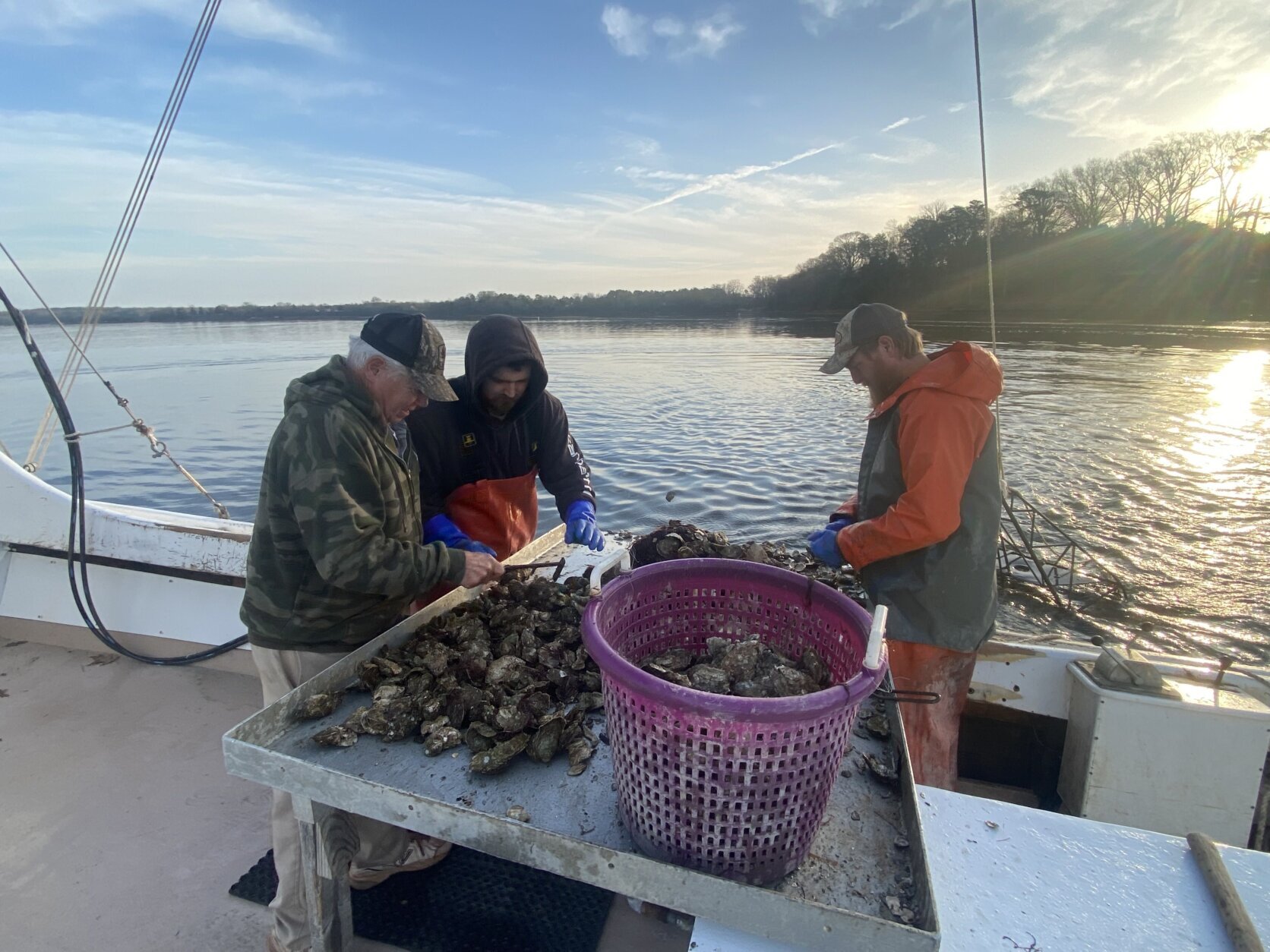 4/5
4/5
Three waterman work to harvest oysters.
(WTOP/John Domen)
In the meantime, the state of Maryland is trying to help improve the market and perception of the state’s oyster industry, which has to compete with oysters from the north Atlantic as well as the Gulf of Mexico. Late last year, Matthew Scales was hired to serve as the Director of Seafood Marketing for the state’s Department of Agriculture. He’s aware of the challenges.
“We’ve been fearing a recession for a while now and people tightening their budget,” said Scales, who was in Boston this week for the North American Seafood Expo. “We haven’t had a recession. The economy has been stable.”
Now it’s about trying to push a message of “hey, it’s OK to celebrate.”
“Have a birthday, anniversary, celebrate around seafood. Seafood is a great source of protein and it’s a great item to splurge on every once in a while and you’ve got to treat yourself,” Scales said.
“This is a premium product,” he added.
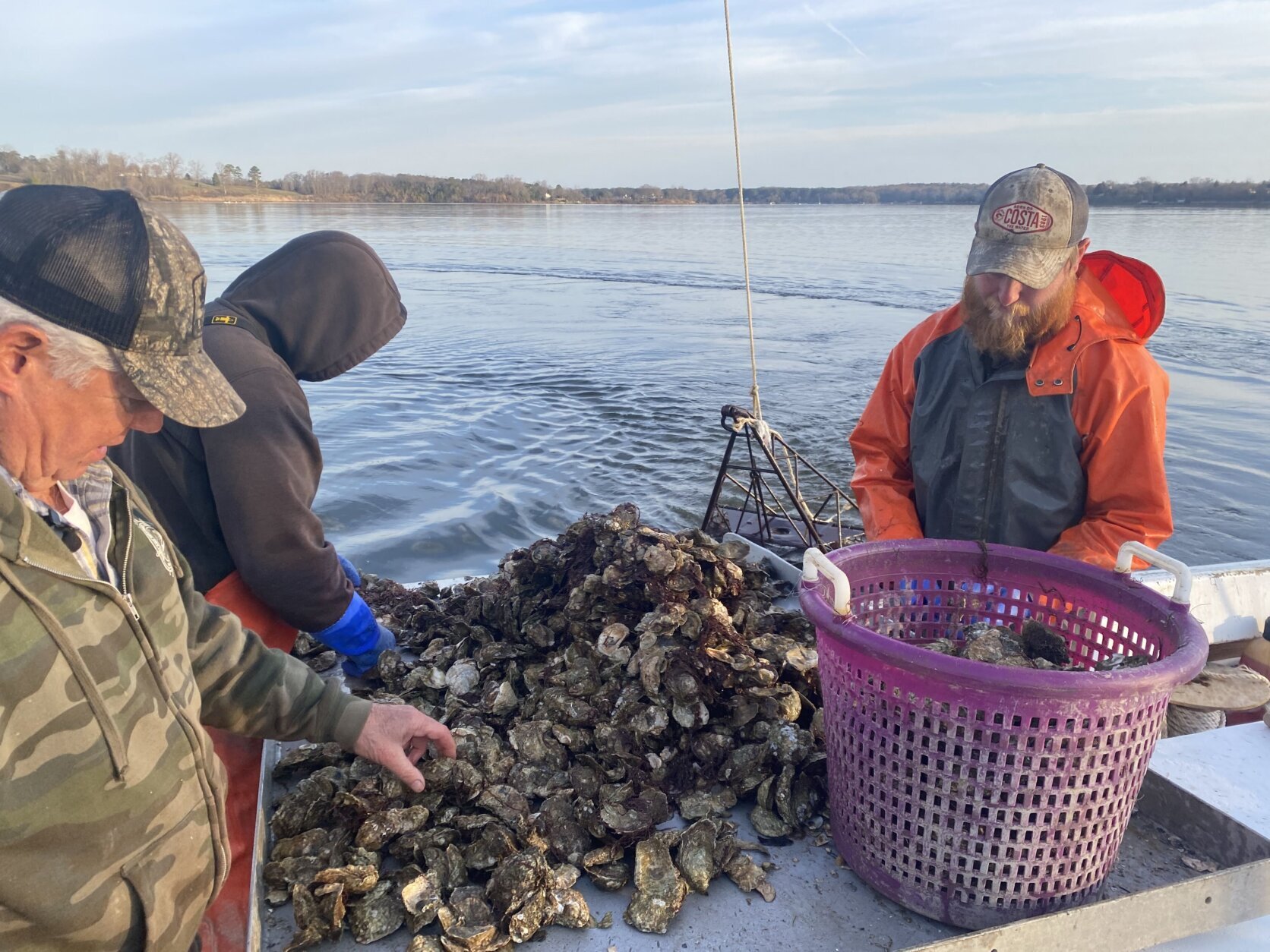 5/5
5/5
Oyster populations are rebounding in Maryland.
(WTOP/John Domen)
Early efforts, including a marketing campaign that tied Maryland’s oysters to its local beer industry, FeBREWary, showed signs of success, he said. Scales is working with restaurants in the Annapolis area to celebrate National Oyster on the Half Shell Day on March 31, he said. Later this year, he’ll be going to an expo hosted by the USDA and the National Restaurant Association in the hopes of opening up more midwestern markets to Maryland’s watermen.
It’s work that Brown appreciates, even if he’s skeptical that the right marketing campaign will bring prices back up again. At the same time, he still sees a much brighter future for an industry he’s been working in since the 1960s, when he was in high school.
“With all these little oysters, we got a bright future for us,” Brown said. “It’s what we’ve been needing. They help filter the water in the bay, clean the water up and also it gives us a place where we can look forward, where we can make our living in the future.”
Get breaking news and daily headlines delivered to your email inbox by signing up here.
© 2024 WTOP. All Rights Reserved. This website is not intended for users located within the European Economic Area.
John Domen
John has been with WTOP since 2016 but has spent most of his life living and working in the DMV, covering nearly every kind of story imaginable around the region. He’s twice been named Best Reporter by the Chesapeake Associated Press Broadcasters Association.













